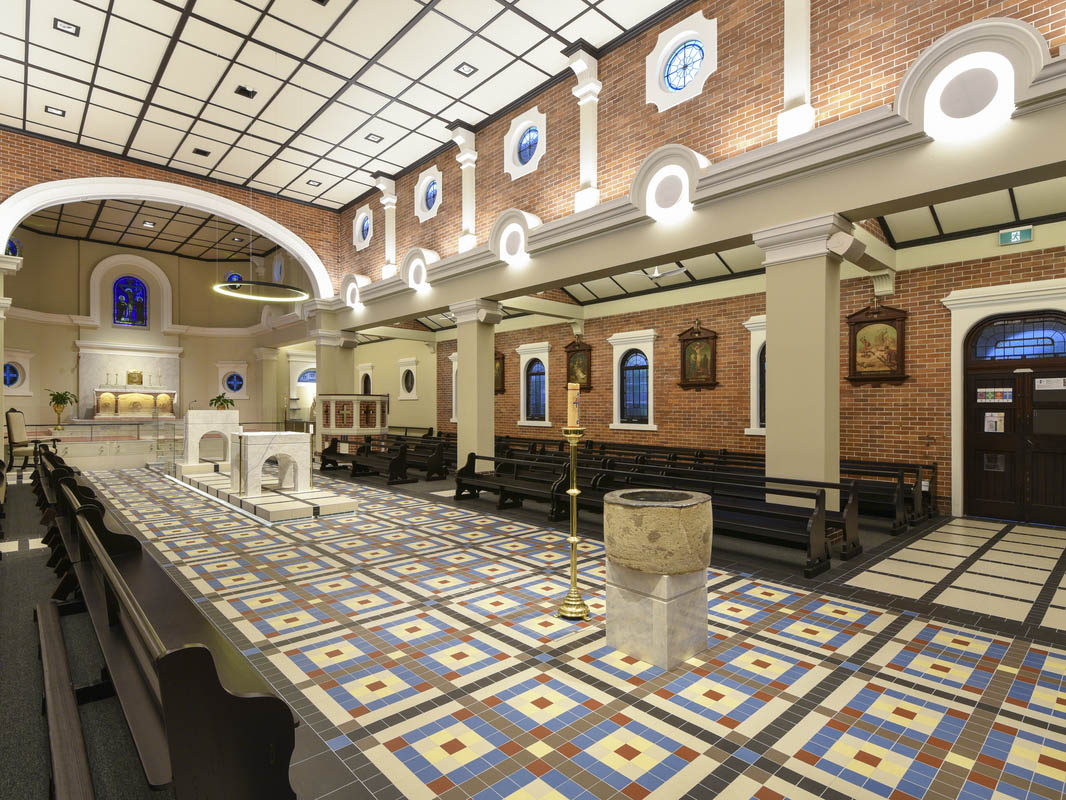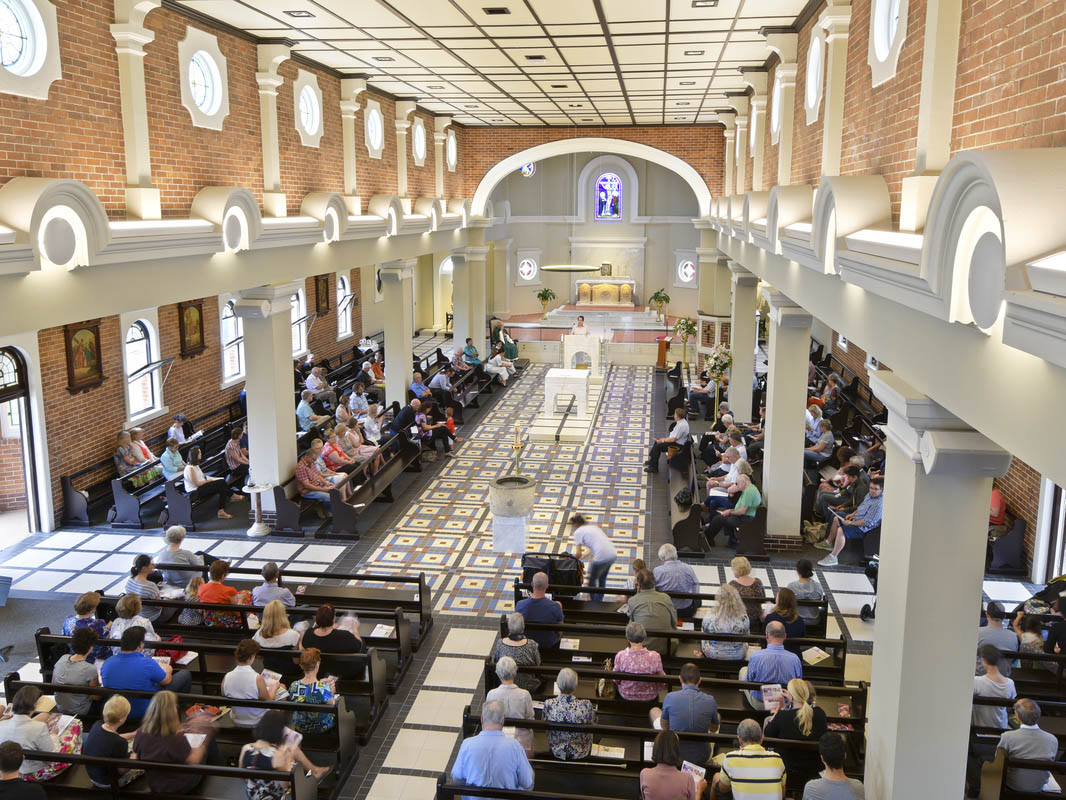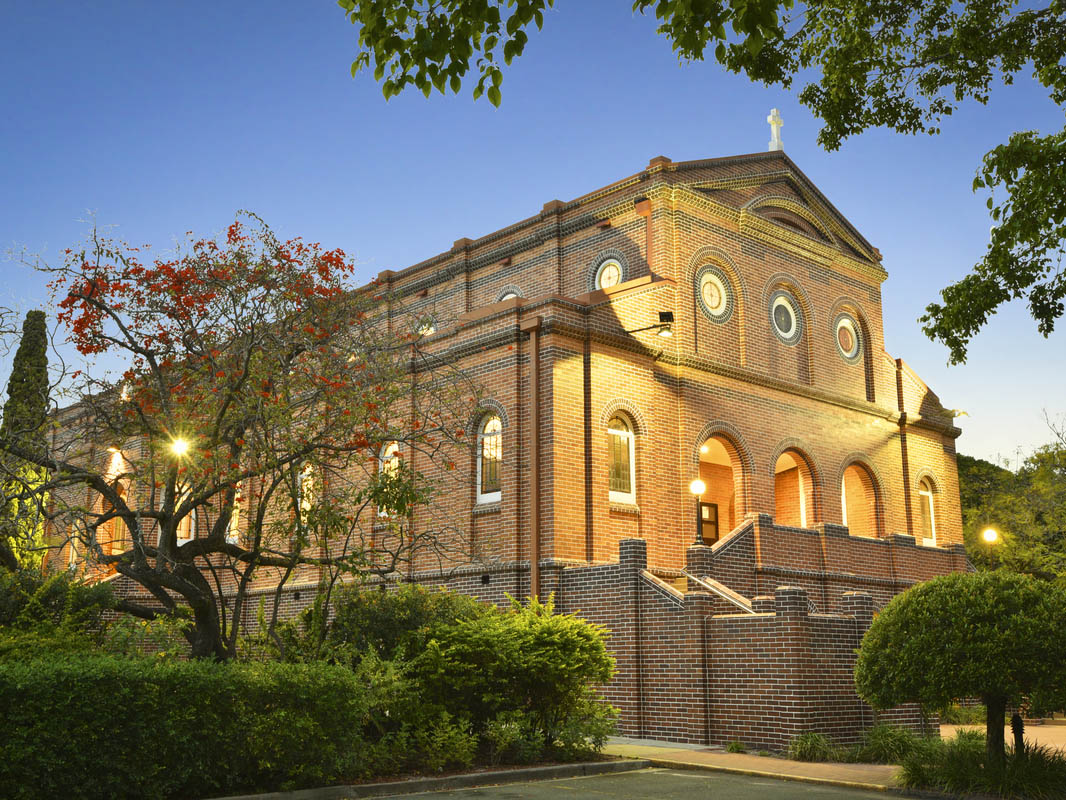With a long history the Saints Peter and Paul church was easily the grandest building in the suburb. As the community began to evolve and change it came time for the church to do the same.
This importance of community was at the stand point of this renovation with all architectural work being completed on a voluntary basis. The ambo and altar could no longer be left, elevated and isolated at the east end of the nave.
In re-imagining the old architecture for a new liturgy, it was important to place the ambo and altar in the centre of the space, in the midst of the gathered Church at prayer.

Without any loss of seating capacity, a central space was created – the colourful tiled floor, the rearranged pews and the careful choice of lighting all help to refocus the attention into the centre, while respecting the east-west axis of the building.
Careful restoration of the external brickwork, artworks and the original colour scheme make this a sensitive work of preservation and restoration.

This renovation and restoration of such a beautiful historic building was a complete success and will be enjoyed by the community for many generations to come.
The ambo and altar carved from single cubes of marble and the ancient Norman font gifted to the parish provide a new vision for the space. The balanced distribution of the seating gives the church a warm communal feel, while the formal arrangement of the centre and the suffused lighting give the church a dignity which evokes the transcendent.
Ninety years ago, the brick church of Saints Peter and Paul was easily the grandest building in the suburb.
Ever since it has been the centre of parish worship, taking on rich layers of sacred as generations of local Catholics have celebrated Sunday Mass, their marriages, the baptisms of their children and the funerals of their grandparents.
Fifty years ago, however, there was a fundamental shift in the way the Church understood what it was doing at the liturgy.
In answer to the question, who celebrates the liturgy, one could no longer answer, the priest, but rather the whole assembly of the baptised who participate in the corporate action of worship.

The ambo and altar could no longer be left, elevated and isolated at the east end of the nave. In re-imagining the old architecture for a new liturgy, it was important to place the ambo and altar in the centre of the space, in the midst of the gathered Church at prayer.
Without any loss of seating capacity, a central space was created – the colourful tiled floor, the rearranged pews and the careful choice of lighting all help to refocus the attention into the centre, while respecting the east-west axis of the building.

